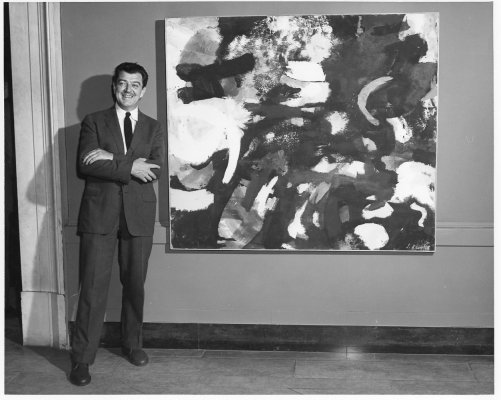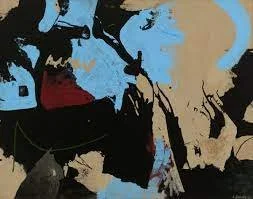
James Brooks
James Brooks was an American painter known for his gestural abstractions of calligraphic forms and rich colors. Partly inspired by his friendship with Jackson Pollock and Lee Krasner, Brooks’s work evolved through an interest in the unconscious as well as experiments with collage. Born on October 18, 1906 in St. Louis, MI, his family moved to Dallas in 1916, where he later attended the Southern Methodist University. Relocating to New York in 1926, he studied under Boardman Robinson at the Art Students League, and later worked as a muralist for the WPA alongside Pollock and Philip Guston. His mural Flight (1942), was made for the Marine Air Terminal at LaGuardia Airport in Queens, it is notably the largest WPA mural ever produced. Brooks served as a combat artist during World War II and returned to New York in 1946. Reconnecting with his friend Pollock, the artist adopted some of the Surrealist principles which led to the advent of Abstract Expressionism. Over the following decades, his works evolved to become more atmospheric, utilizing the accidental bleeds of enamel paint through the canvas weave as a catalyst for mark making. Brooks died on March 9, 1992 in East Hampton, NY. Today, the artist’s works are held in the collections of the Art Institute of Chicago, The Museum of Modern Art in New York, the Tate Gallery in London, and the National Gallery of Art in Washington, D.C., among others.
Credit Artnet.com



